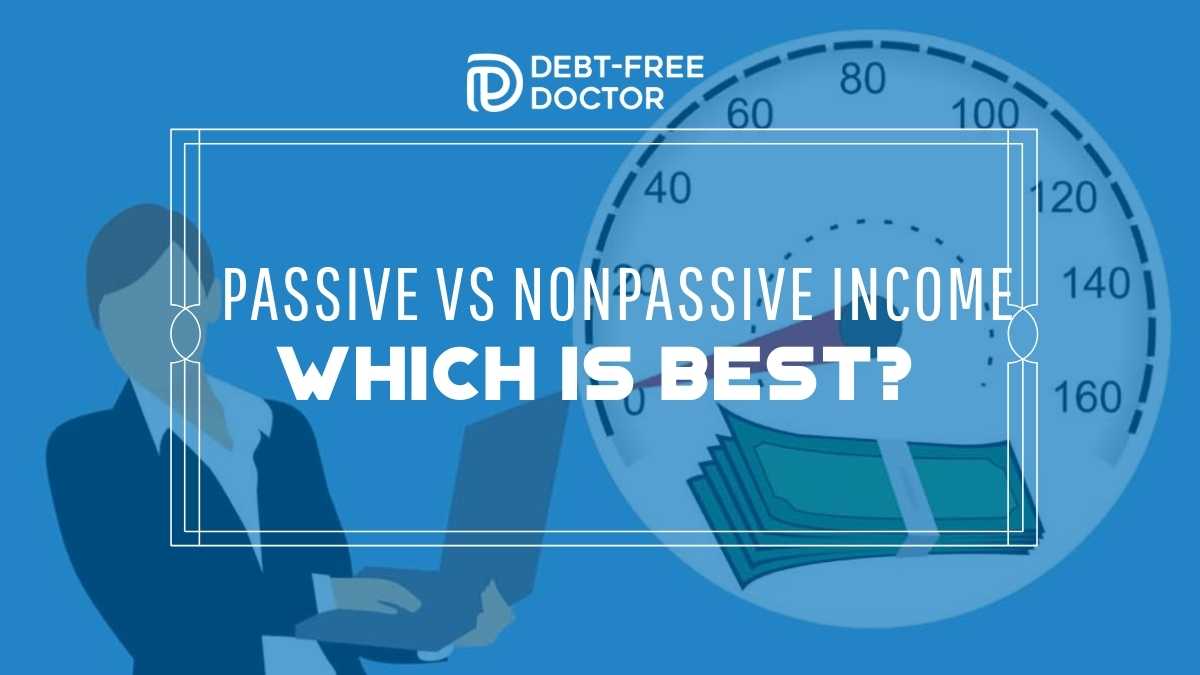Passive Vs Nonpassive Income
Up until a few short years ago, I thought all income was equal. Growing up, all the money I earned was from a lawn service I started in junior high school. It provided me with a nice income up until the time I started dental school at LSU.
When I thought about starting or joining a practice, my only focus was on the work I was to perform and the income that would be made from my job.
The only income I really knew much about up until a few years ago was nonpassive income.
I knew that: Treating a patient = income
After I started this site, I connected with other bloggers and noted that many were writing articles about building up streams of passive income.
Up until that point, all my income was dependent on me physically going to work and seeing patients. Heaven forbid if something were to happen to me.
Learning this made me really take a hard look at my life and how I was providing for my family. If I were to get injured, then what?
I knew I needed to start making some changes. BIG time.
This passive income stuff everyone was talking about intrigued me.
The idea that someone could invest in something that could spin off income passively thus allowing a quicker path to financial freedom got my attention.
Especially after I interviewed someone that was making much less than me each year when he retired at 38!
I guess the old adage is true, “It’s NOT what you make, it’s what you save that counts.”
At this point, it was time for me to stop focusing on nonpassive income and shift to creating passive income streams instead.
Before we get started, let’s take a look at the two main types of income:
Passive vs Nonpassive income
Passive vs Nonpassive Income
Nonpassive (Active) Income
According to Investopedia, Nonpassive or Active Income is income for which services have been performed.
This includes:
- wages
- tips
- salaries
- commissions
- income from businesses in which there is material participation
Translation: If you earn active income ONLY, you’re trading your time for money. If you’re an employee working for a group practice or like me, a practice owner, and get injured or sick, we’re up a poo-poo creek without a paddle.
It’s safe to say that most people reading this have active income from their job as their ONLY income. That’s a risky position to be in.
Active income is where most of us get started when we first start practicing. There’s nothing wrong with it. It certainly pays and continues to pay our bills but…. in order to reach financial security, you can’t solely rely on it.
You need to focus on creating passive income.
Passive Income
Let’s go back to our friends at Investopedia for the definition of passive income:
Earnings an individual derives from a rental property, limited partnership or other enterprise in which he or she is not actively involved.
I like that “not actively involved” part.
In essence, if you’re earning passive income, you are doing so with little to no effort. You’re hands off.
What Are Your Goals?
I’m a visual person so I learn best from seeing things on paper.
For all you other visual learners, here’s an easy way to explain how I’ve begun to accomplish my goal of replacing our expenses as quickly as possible.
Do you remember as a kid playing on a seesaw?
This is how I picture our expenses.
The “BIG” dude on the left is our current household expenses that are being paid via active income.
If daddy don’t work, they don’t get paid!
The “little guy” on the right are the ones that passive income is taking care of.
Here’s an example:
Dr. A is a dentist and spends $10,000 a month ($120,000/yr) to keep his household running.
This includes his mortgage, insurance, food, gym membership, cell phone plan, etc.
Once he decided that he didn’t want to work so long that he may die holding a handpiece, he then began investing in several multifamily syndications.
These are currently paying $2,000 of those $10,000 monthly expenses.
As an accredited investor, he’s lucky enough to have access to these deals which typically require an initial investment of $50,000.
Each year, he saves his money until he’s able to invest. Currently he’s investing in two a year.
Each deal is paying out a preferred monthly 8% return.
So for each $50K investment, he’s earning $4,000/year ($50,000 x .08 = $4,000).
$4,000/ 12 months = $333 per month
If we take the $10,000/month in expenses, then he’ll need to invest roughly $1.5M in these deals to cover them.
1.5M x 0.8 = $120,000
A Final Thought About Passive vs Nonpassive Income
For those just starting off in practice, focus on growing your active income by investing in yourself.
The BEST investment is in YOU.
As you become more proficient and better at what you do, charge more (or ask for more if you’re an employee). Life’s too short, get what you’re worth.
If you want to eventually live life on your own terms and work if you want, then growing passive income is a must.
As it begins to grow and snowball, you’ll have more money available to continue investing.




